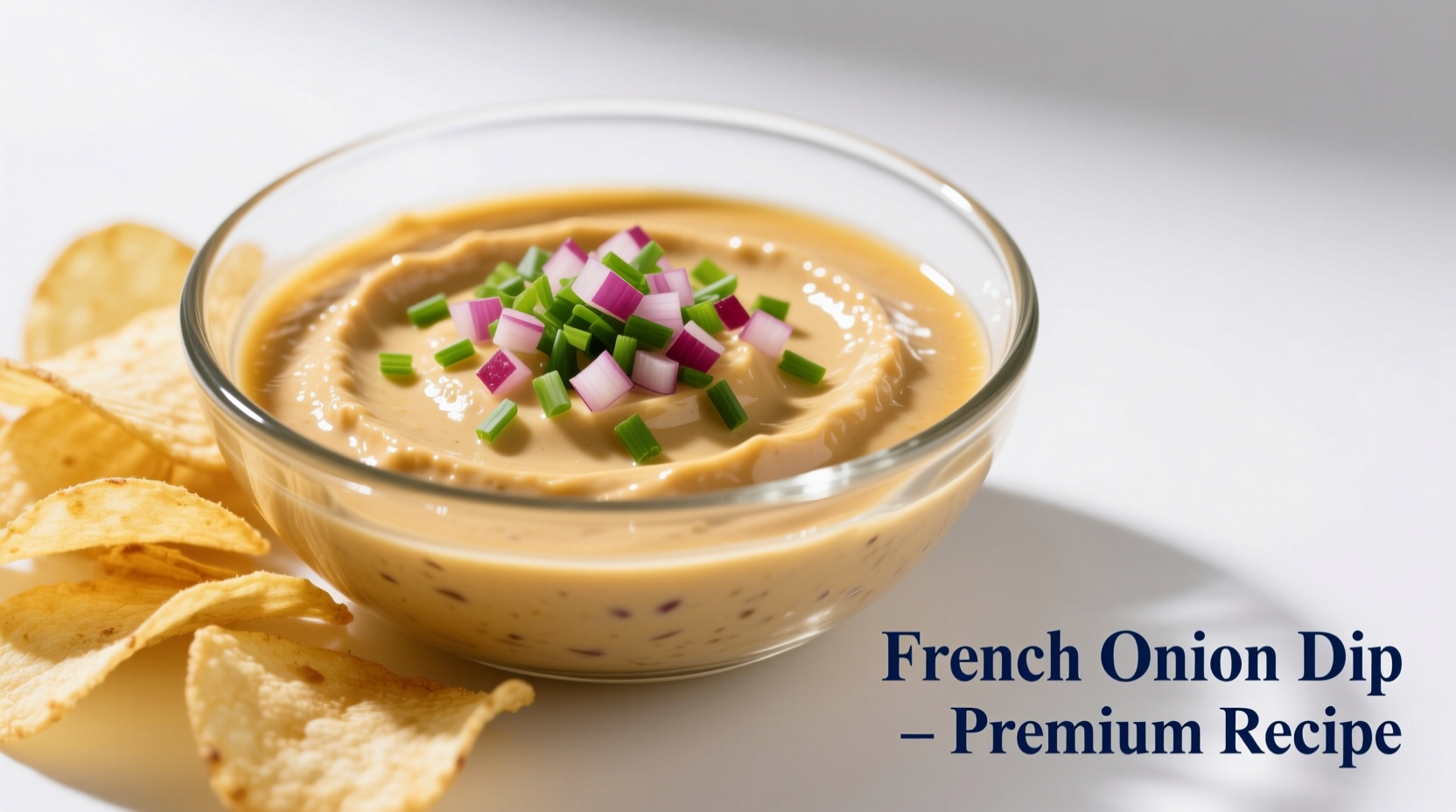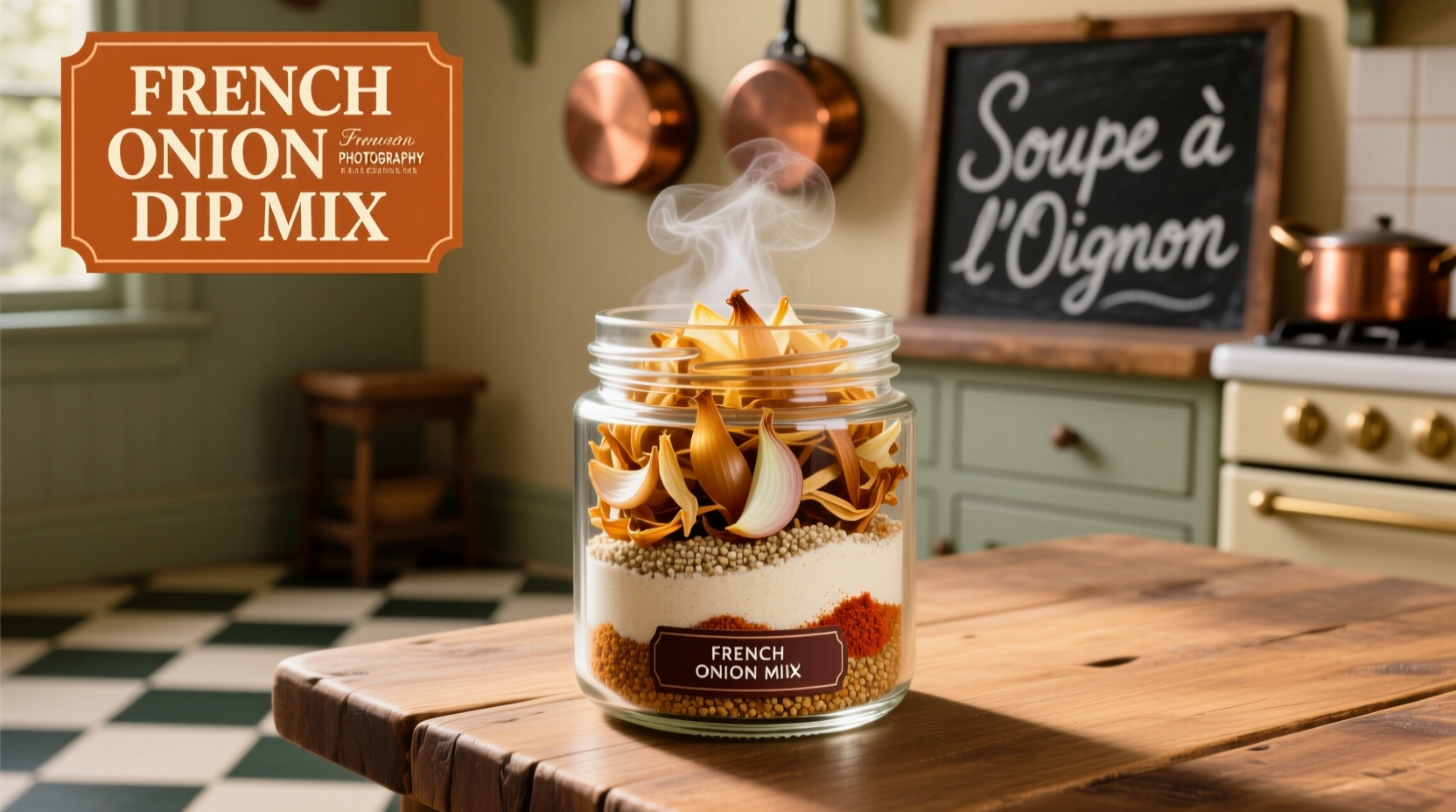What Exactly Is French Onion Dip Mix?
French onion dip mix is a dry seasoning blend designed to create a creamy onion-flavored dip when combined with sour cream or mayonnaise. Unlike homemade versions requiring caramelized onions, these convenient mixes deliver consistent flavor with minimal preparation time. The typical base ingredients include dehydrated onions, garlic powder, parsley, salt, and various seasonings.
| Brand Comparison | Key Ingredients | Preparation Time | Distinctive Features |
|---|---|---|---|
| Classic Brand | Dehydrated onions, garlic, parsley, salt | 5 minutes | Traditional flavor profile |
| Gourmet Selection | Shallots, chives, onion powder, natural flavors | 3 minutes | More complex onion notes |
| Organic Option | Organic onion, garlic, parsley, no artificial flavors | 5 minutes | Cleaner ingredient list |
From Pantry Staple to Party Favorite: The Evolution
French onion dip emerged as a popular American appetizer in the 1950s, coinciding with the rise of convenience foods. According to culinary historians at the Smithsonian National Museum of American History, the dip's popularity surged when a major sour cream company published a recipe combining their product with Lipton's French Onion Soup mix. This accidental discovery created the prototype for today's dedicated dip mixes.

Mastering the Basic Preparation
The standard preparation requires just two steps: combine one packet of mix with 16 ounces of sour cream or mayonnaise, then refrigerate for at least one hour before serving. However, professional chefs consistently achieve better results by following these enhanced techniques:
- Temperature matters: Use full-fat sour cream at room temperature for optimal flavor release
- Resting time: Allow minimum 2 hours (not just 1) for flavors to fully develop
- Texture control: Add 1-2 tablespoons of milk if too thick, or refrigerate longer if too thin
Creative Applications Beyond the Chip Bowl
While traditionally served with potato chips, French onion dip mix offers surprising versatility across multiple culinary applications:
Sandwich Enhancement
Transform ordinary sandwiches by spreading a thin layer of prepared dip on bread before adding other ingredients. Works particularly well with roast beef, turkey, and grilled cheese sandwiches. The dip's savory notes complement meats while providing moisture without sogginess.
Potato Perfection
Use as a finishing touch for baked potatoes instead of sour cream. Mix one packet with 1 cup of sour cream and 2 tablespoons of melted butter for an instant loaded potato topping. For twice-baked potatoes, incorporate prepared dip directly into the potato filling.
Cooked Dish Integration
Surprisingly effective in cooked applications when added toward the end of preparation. Stir into mashed potatoes, mix with ground meat for savory patties, or use as a base for casseroles. The USDA Food Safety and Inspection Service recommends cooking any dip-containing dishes to an internal temperature of 165°F (74°C) for safety.
Professional Flavor Enhancement Techniques
Take your dip from basic to exceptional with these chef-approved modifications:
Flavor Boosters
- Add 1 teaspoon Worcestershire sauce for umami depth
- Mix in 1 tablespoon finely minced fresh chives for brightness
- Incorporate 1/2 teaspoon smoked paprika for complexity
Dietary Adaptations
For dairy-free versions, combine the mix with vegan sour cream alternatives. The Academy of Nutrition and Dietetics notes that coconut-based alternatives work surprisingly well, though they require additional lemon juice (1/2 teaspoon) to balance the flavor profile. For lower sodium options, reduce the mix quantity by 25% and compensate with additional fresh onion and garlic.
Serving and Storage Guidelines
For optimal presentation, serve dip in a hollowed-out bread bowl or chilled ceramic dish. Garnish with fresh chives or parsley just before serving. According to food safety guidelines from foodsafety.gov, prepared dip should be refrigerated within 2 hours of preparation and consumed within 5 days. Never leave dip at room temperature for more than 2 hours, or 1 hour if the ambient temperature exceeds 90°F (32°C).
Troubleshooting Common Issues
Problem: Dip tastes too artificial
Solution: Add 1 teaspoon fresh lemon juice and 1 tablespoon finely minced real onion to balance flavors
Problem: Dip separates or becomes watery
Solution: Stir in 1-2 teaspoons of instant potato flakes to stabilize texture
Problem: Flavor too mild
Solution: Let dip rest overnight in refrigerator - flavors intensify with time
Frequently Asked Questions
Can I use Greek yogurt instead of sour cream?
Yes, but use full-fat Greek yogurt and add 1 tablespoon of milk per cup to maintain proper consistency. The tanginess will be more pronounced, so consider reducing any additional acidic ingredients.
How can I make the dip less salty?
To reduce saltiness, add 1/4 cup unsweetened applesauce or 2 tablespoons of plain yogurt. These ingredients help balance flavors without diluting the dip. For future batches, use 3/4 of the packet instead of the full amount.
What vegetables pair best with French onion dip?
Bell peppers, broccoli florets, cauliflower, and cucumber slices provide excellent texture contrast. For more sophisticated pairings, try endive leaves, radishes, or blanched asparagus spears. The crisp texture complements the creamy dip perfectly.
Can I freeze French onion dip?
Freezing is not recommended as the dairy base will separate upon thawing. For best results, prepare only what you'll use within 5 days. If you must prepare in advance, keep the mix and dairy separate until ready to serve.











 浙公网安备
33010002000092号
浙公网安备
33010002000092号 浙B2-20120091-4
浙B2-20120091-4